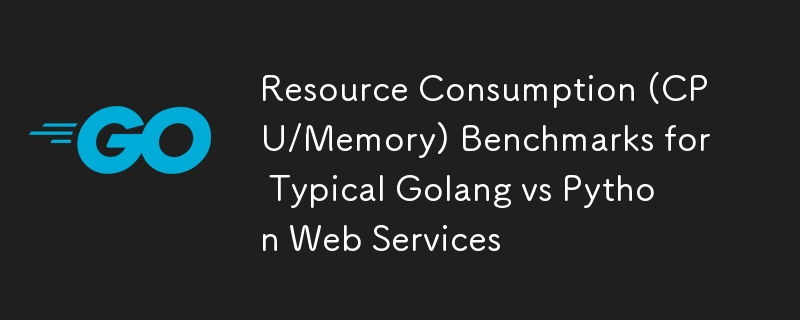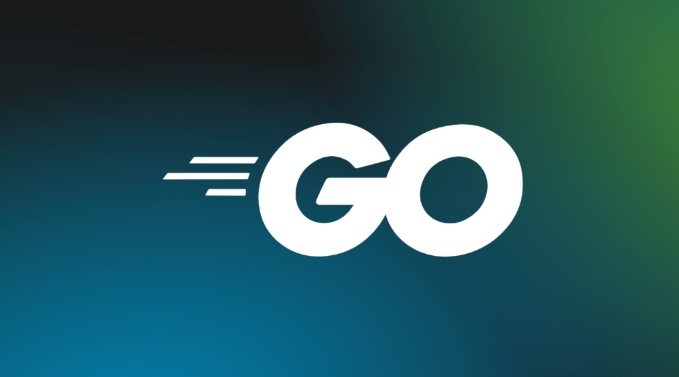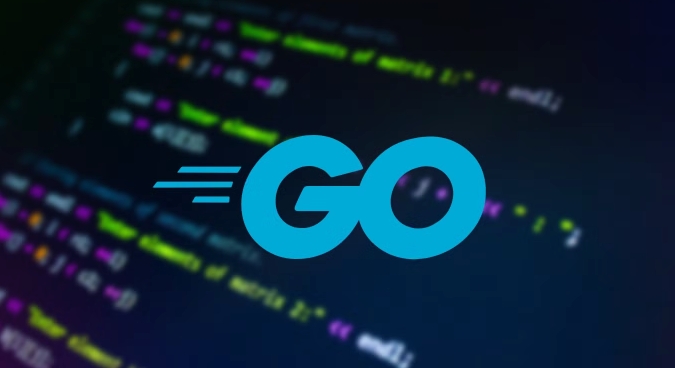 Backend Development
Backend Development
 Golang
Golang
 Resource Consumption (CPU/Memory) Benchmarks for Typical Golang vs Python Web Services
Resource Consumption (CPU/Memory) Benchmarks for Typical Golang vs Python Web Services
Resource Consumption (CPU/Memory) Benchmarks for Typical Golang vs Python Web Services
Jul 03, 2025 am 02:38 AMGolang usually consumes less CPU and memory than Python when building web services. 1. Golang's goroutine model is efficient in scheduling, has strong concurrent request processing capabilities, and has lower CPU utilization; 2. Go is compiled into native code, does not rely on virtual machines during runtime, and has a smaller memory footprint; 3. Python has a greater CPU and memory overhead in concurrent scenarios due to GIL and interpretation execution mechanism; 4. Although Python has high development efficiency and rich ecosystem, it consumes a high resource, which is suitable for scenarios with low concurrency requirements.

If you want to know the difference in CPU and memory consumption between Golang and Python when building web services, the most direct answer is: Golang usually performs better in resource efficiency, especially in high concurrency scenarios.

Comparison of CPU usage under high concurrency
Go (Golang)'s goroutine model makes it naturally suitable for handling large numbers of concurrent requests. Each goroutine has very small overhead, only about 2KB of memory usage, and is very efficient in scheduling.

Python is highly restricted in multithreaded concurrency due to the existence of global interpreter locks (GILs). While GIL can be bypassed by multiple processes, this leads to higher CPU context switching overhead and greater memory footprint.
Let's give a simple example:

- A Go-written HTTP service may maintain CPU usage at around 30% at 1000 QPS.
- Under the same load, services implemented with Flask or Django may use more than 60% of the CPU, especially without asynchronous support.
This is not to say that Python is bad, but the language mechanism determines its performance ceiling in some scenarios.
Memory footprint: lightweight vs flexibility
Go compiles to native code and does not require an extra virtual machine or interpreter at runtime, so it usually has a low memory footprint. A typical Go Web service may only occupy dozens of MB of memory when it is idle.
Python needs to explain execution, dynamic types, and runtime libraries that rely more on, and memory usage is relatively high after startup. Even for small Flask applications, the initial memory may reach 50MB to 100MB, and it will grow faster as the number of requests increases.
Some actual observation data can be referenced:
- Go Gin framework: With 1000 concurrent requests, memory occupies about 80MB
- Python Flask (Werkzeug): It may reach 300MB to 400MB under the same conditions
- If you use gunicorn multi-worker mode, the memory can easily exceed 500MB
Of course, using asynchronous frameworks such as FastAPI or Tornado can alleviate some of the problems, but overall it is still not as lightweight as Go.
The trade-off between development efficiency and performance
Although Go has obvious performance advantages, Python still has advantages that cannot be ignored in terms of development efficiency and ecological richness. For example:
- Rapid prototyping: Python faster
- Data processing, machine learning integration: Python ecosystem is more mature
- Team Skill Matching: If the team is familiar with Python, it is expensive to change languages
Therefore, when choosing a language, you should not only look at performance indicators, but also combine project needs and team background.
If your application does not expect high concurrency or is not sensitive to response time, Python is perfectly competent. But if you want to support large-scale access, microservice architecture, or want to reduce server resource expenditure, Go is a more suitable choice.
Overall, Golang is more efficient than Python in terms of CPU and memory resource utilization, and is especially suitable for high concurrency and low latency Web services. The advantages of Python lie in its rapid development and rich library support, but it is indeed higher in resource consumption. Which language to choose depends on the specific scenario.
The above is the detailed content of Resource Consumption (CPU/Memory) Benchmarks for Typical Golang vs Python Web Services. For more information, please follow other related articles on the PHP Chinese website!

Hot AI Tools

Undress AI Tool
Undress images for free

Undresser.AI Undress
AI-powered app for creating realistic nude photos

AI Clothes Remover
Online AI tool for removing clothes from photos.

Clothoff.io
AI clothes remover

Video Face Swap
Swap faces in any video effortlessly with our completely free AI face swap tool!

Hot Article

Hot Tools

Notepad++7.3.1
Easy-to-use and free code editor

SublimeText3 Chinese version
Chinese version, very easy to use

Zend Studio 13.0.1
Powerful PHP integrated development environment

Dreamweaver CS6
Visual web development tools

SublimeText3 Mac version
God-level code editing software (SublimeText3)
 Is golang frontend or backend
Jul 08, 2025 am 01:44 AM
Is golang frontend or backend
Jul 08, 2025 am 01:44 AM
Golang is mainly used for back-end development, but it can also play an indirect role in the front-end field. Its design goals focus on high-performance, concurrent processing and system-level programming, and are suitable for building back-end applications such as API servers, microservices, distributed systems, database operations and CLI tools. Although Golang is not the mainstream language for web front-end, it can be compiled into JavaScript through GopherJS, run on WebAssembly through TinyGo, or generate HTML pages with a template engine to participate in front-end development. However, modern front-end development still needs to rely on JavaScript/TypeScript and its ecosystem. Therefore, Golang is more suitable for the technology stack selection with high-performance backend as the core.
 How to install Go
Jul 09, 2025 am 02:37 AM
How to install Go
Jul 09, 2025 am 02:37 AM
The key to installing Go is to select the correct version, configure environment variables, and verify the installation. 1. Go to the official website to download the installation package of the corresponding system. Windows uses .msi files, macOS uses .pkg files, Linux uses .tar.gz files and unzip them to /usr/local directory; 2. Configure environment variables, edit ~/.bashrc or ~/.zshrc in Linux/macOS to add PATH and GOPATH, and Windows set PATH to Go in the system properties; 3. Use the government command to verify the installation, and run the test program hello.go to confirm that the compilation and execution are normal. PATH settings and loops throughout the process
 How to build a GraphQL API in golang
Jul 08, 2025 am 01:03 AM
How to build a GraphQL API in golang
Jul 08, 2025 am 01:03 AM
To build a GraphQLAPI in Go, it is recommended to use the gqlgen library to improve development efficiency. 1. First select the appropriate library, such as gqlgen, which supports automatic code generation based on schema; 2. Then define GraphQLschema, describe the API structure and query portal, such as defining Post types and query methods; 3. Then initialize the project and generate basic code to implement business logic in resolver; 4. Finally, connect GraphQLhandler to HTTPserver and test the API through the built-in Playground. Notes include field naming specifications, error handling, performance optimization and security settings to ensure project maintenance
 Go sync.WaitGroup example
Jul 09, 2025 am 01:48 AM
Go sync.WaitGroup example
Jul 09, 2025 am 01:48 AM
sync.WaitGroup is used to wait for a group of goroutines to complete the task. Its core is to work together through three methods: Add, Done, and Wait. 1.Add(n) Set the number of goroutines to wait; 2.Done() is called at the end of each goroutine, and the count is reduced by one; 3.Wait() blocks the main coroutine until all tasks are completed. When using it, please note: Add should be called outside the goroutine, avoid duplicate Wait, and be sure to ensure that Don is called. It is recommended to use it with defer. It is common in concurrent crawling of web pages, batch data processing and other scenarios, and can effectively control the concurrency process.
 Go embed package tutorial
Jul 09, 2025 am 02:46 AM
Go embed package tutorial
Jul 09, 2025 am 02:46 AM
Using Go's embed package can easily embed static resources into binary, suitable for web services to package HTML, CSS, pictures and other files. 1. Declare the embedded resource to add //go:embed comment before the variable, such as embedding a single file hello.txt; 2. It can be embedded in the entire directory such as static/*, and realize multi-file packaging through embed.FS; 3. It is recommended to switch the disk loading mode through buildtag or environment variables to improve efficiency; 4. Pay attention to path accuracy, file size limitations and read-only characteristics of embedded resources. Rational use of embed can simplify deployment and optimize project structure.
 Go for Audio/Video Processing
Jul 20, 2025 am 04:14 AM
Go for Audio/Video Processing
Jul 20, 2025 am 04:14 AM
The core of audio and video processing lies in understanding the basic process and optimization methods. 1. The basic process includes acquisition, encoding, transmission, decoding and playback, and each link has technical difficulties; 2. Common problems such as audio and video aberration, lag delay, sound noise, blurred picture, etc. can be solved through synchronous adjustment, coding optimization, noise reduction module, parameter adjustment, etc.; 3. It is recommended to use FFmpeg, OpenCV, WebRTC, GStreamer and other tools to achieve functions; 4. In terms of performance management, we should pay attention to hardware acceleration, reasonable setting of resolution frame rates, control concurrency and memory leakage problems. Mastering these key points will help improve development efficiency and user experience.
 How to build a web server in Go
Jul 15, 2025 am 03:05 AM
How to build a web server in Go
Jul 15, 2025 am 03:05 AM
It is not difficult to build a web server written in Go. The core lies in using the net/http package to implement basic services. 1. Use net/http to start the simplest server: register processing functions and listen to ports through a few lines of code; 2. Routing management: Use ServeMux to organize multiple interface paths for easy structured management; 3. Common practices: group routing by functional modules, and use third-party libraries to support complex matching; 4. Static file service: provide HTML, CSS and JS files through http.FileServer; 5. Performance and security: enable HTTPS, limit the size of the request body, and set timeout to improve security and performance. After mastering these key points, it will be easier to expand functionality.
 Go select with default case
Jul 14, 2025 am 02:54 AM
Go select with default case
Jul 14, 2025 am 02:54 AM
The purpose of select plus default is to allow select to perform default behavior when no other branches are ready to avoid program blocking. 1. When receiving data from the channel without blocking, if the channel is empty, it will directly enter the default branch; 2. In combination with time. After or ticker, try to send data regularly. If the channel is full, it will not block and skip; 3. Prevent deadlocks, avoid program stuck when uncertain whether the channel is closed; when using it, please note that the default branch will be executed immediately and cannot be abused, and default and case are mutually exclusive and will not be executed at the same time.





